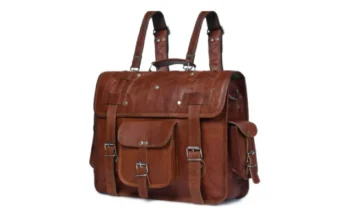Choosing the right flooring for your walk in wardrobes can be a bit overwhelming. First, think about how you’ll actually use the space—are you just storing clothes, or will it also serve as a dressing area? If the foot traffic is high, durability becomes crucial. Different materials come with their own pros and cons. Carpet offers comfort but can get dirty fast, while vinyl is easy to clean and water-resistant. Consider what looks nice too; colors should match your home’s style. Don’t forget about maintenance—some floors demand more time than others. Getting samples will really help before you decide!
1. Consider the Purpose of Your Walk-In Wardrobe
Before diving into flooring options, it’s crucial to define the purpose of your walk in wardrobes. Is it simply a space for hanging clothes, or do you envision it as a multifunctional area for dressing and storage? If you plan to use it mainly for clothing, you might prioritize comfort and warmth underfoot. On the other hand, if you want to incorporate a dressing area, durability and ease of cleaning become more important. Think about any additional storage you might need as well; this could also influence your flooring choice. For example, if you expect to frequently access shoes or accessories stored in bins, a more resilient flooring material could be beneficial to handle the increased foot traffic. Understanding how you intend to use the space will guide you in selecting the most suitable flooring.
2. Evaluate Foot Traffic in the Space
When choosing flooring for your walk-in wardrobe, it’s essential to consider the level of foot traffic the space will experience. If you anticipate frequent use, such as daily dressing or quick outfit changes, you’ll want durable flooring that can withstand the wear and tear. For instance, high-quality vinyl or laminate can handle regular foot traffic without showing signs of damage, while hardwood may scratch more easily if you’re not careful. On the other hand, if your wardrobe is primarily for storage and occasional use, you might opt for softer materials like carpet, which can add warmth and comfort without the same durability concerns. Think about how often the space will be used and choose a flooring option that meets those demands.
3. Choose the Right Flooring Material
Choosing the right flooring material for your walk-in wardrobe is essential for both functionality and style. Start by considering how you plan to use the space. If it’s purely for clothing, you might prioritize comfort. Carpet, for example, adds warmth and a cozy feel, but be mindful that it can require more upkeep, especially in terms of stains. On the other hand, if your wardrobe doubles as a dressing area, a water-resistant option like vinyl could be more practical. Vinyl is not only durable and easy to clean, but it also stands up well against spills.
For those who love the look of wood, hardwood can provide that luxurious touch, though it may come at a higher price and requires regular maintenance. Alternatively, laminate can offer a similar aesthetic at a lower cost and with added resistance to scratches and fading.
If you prefer a modern vibe, tile is a fantastic choice. It’s durable and water-resistant, but keep in mind it can feel cold underfoot. When selecting colors and patterns, aim for those that enhance your wardrobe’s overall design while still reflecting your personal style. Remember, if you spend considerable time in your wardrobe, comfort is key, so choose a flooring that feels good beneath your feet. Lastly, don’t forget to think about maintenance; some materials are easier to care for than others. A little planning goes a long way in creating the perfect walk-in wardrobe.
4. Assess Aesthetic Appeal of Flooring
When choosing flooring for your walk-in wardrobe, aesthetic appeal plays a vital role in creating a space that feels inviting and reflects your personal style. Start by considering the overall theme and color palette of your home. If your home has a modern design, sleek tiles or laminate that mimics wood can enhance that contemporary feel. For a more traditional look, hardwood flooring with warm tones can add elegance and sophistication.
Patterns also matter. Lighter colors can make the space feel larger and more open, while darker hues add richness and coziness. If you want to add character, consider patterned vinyl or carpet that can serve as a focal point. Remember to visualize how the flooring will complement your wardrobe contents, from clothing to accessories. Bringing in samples to see how they look in your lighting can help you make the right choice. Ultimately, the right flooring should not only be practical but also enhance your wardrobe’s visual appeal.
5. Prioritize Comfort and Feel Underfoot
When selecting flooring for your walk-in wardrobe, comfort should be a top priority, especially if you spend significant time in the space. Flooring that feels good underfoot can make a big difference, particularly during those moments when you’re trying on outfits or organizing your clothes. For instance, plush carpet provides a soft and cozy feel, ideal for creating a warm atmosphere. However, keep in mind that it might require more upkeep to keep it looking fresh. On the other hand, materials like vinyl can also offer comfort while being durable and easy to clean, perfect for those who might have spills or need a low-maintenance option. If you prefer a more natural feel, hardwood can add elegance and warmth, though it may not be as forgiving on your feet compared to carpet. Ultimately, consider how each material feels when you walk on it, and choose something that enhances your experience in the wardrobe.
6. Understand Maintenance Requirements
When choosing flooring for your walk-in wardrobe, it’s essential to consider how much maintenance you’re willing to undertake. Different materials come with varying upkeep needs. For instance, carpet might require regular vacuuming and occasional deep cleaning to keep it looking fresh, especially if you opt for lighter colors that show stains easily. On the other hand, vinyl flooring is typically low-maintenance; a simple sweep and occasional mopping can keep it in good shape. If you choose hardwood, be prepared for refinishing every few years and regular dusting to avoid scratches. Tile is durable but may need grout cleaning to prevent mildew buildup. Understanding these maintenance requirements upfront can save you time and effort later on, ensuring your wardrobe remains a stylish and functional space.
- Regularly sweep or vacuum the floor to remove dust and debris.
- Use a damp mop for deeper cleaning, avoiding excessive water.
- Identify the specific cleaning products recommended for your flooring type.
- Schedule routine maintenance checks to address any wear and tear.
- Be cautious of spills; clean them up immediately to prevent stains.
- If applicable, ensure that the flooring treatment or sealant is periodically reapplied.
- Avoid harsh chemicals that could damage the flooring.
7. Installation Options: DIY or Professional
When it comes to installing flooring in your walk-in wardrobe, you have two main options: doing it yourself (DIY) or hiring a professional. If you’re handy and enjoy home improvement projects, you might consider tackling the installation on your own. Many flooring materials, like laminate and vinyl, come with user-friendly instructions, making them accessible for DIYers. However, it’s important to ensure you have the right tools and enough time to dedicate to the project.
On the other hand, if you prefer a polished finish or are unsure about your skills, hiring a professional can save you time and potential headaches. Professionals have the experience to handle tricky areas, ensure proper measurements, and provide a seamless installation. They can also help you choose the right materials based on your wardrobe’s specifics. Ultimately, your choice will depend on your comfort level, budget, and the complexity of the flooring you select.
8. Set a Realistic Budget
When planning your walk-in wardrobe flooring, setting a realistic budget is essential. Start by determining how much you can comfortably spend. This budget should cover not just the cost of the flooring materials but also installation. For example, high-end hardwood might look stunning, but if it stretches your finances too thin, you might consider laminate or vinyl as budget-friendly alternatives that still offer a stylish look.
Don’t forget to factor in future maintenance costs. Some materials like carpet may require regular cleaning or replacement, while tile or vinyl could save you money in the long run due to their durability. Additionally, think about whether you’ll tackle the installation yourself or hire a professional, as this can significantly affect your overall cost. By laying out a clear budget from the start, you’ll make more informed choices that align with your financial plan.
9. Account for Climate Considerations
Climate plays a crucial role in selecting the right flooring for your walk-in wardrobe. If you live in a humid area, moisture can be a real concern. In such cases, materials like vinyl or tile are excellent choices because they resist water and don’t warp easily. For example, vinyl can handle spills and humidity without deteriorating, making it practical for warmer climates. On the other hand, if you’re in a dry region, hardwood might be a tempting option, but be aware that it can expand and contract with temperature changes. Understanding your local climate can help you choose flooring that remains durable and looks great over time.
10. Sample Flooring Before Making a Choice
Before committing to a flooring option for your walk-in wardrobe, it’s a smart move to obtain samples. This allows you to see how the materials look in your actual space, taking into account the lighting and color scheme. For instance, a light-colored vinyl may appear different under natural light compared to artificial lighting. By testing samples, you can better assess how each type feels underfoot, especially if you’ll be spending a lot of time in your wardrobe. Additionally, some stores allow you to take larger samples home, which can give you a clearer idea of the overall aesthetic. This step is crucial in avoiding buyer’s remorse and ensuring that the flooring not only meets your practical needs but also aligns with your personal style.
11. Explore Sustainable Flooring Options
If you’re concerned about the environment, sustainable flooring options can be a fantastic choice for your walk-in wardrobe. Look for materials that are made from recycled content or sourced from renewable resources. Bamboo flooring, for example, is a rapidly growing grass that provides a durable surface while being eco-friendly. Cork is another great option; it’s harvested from the bark of cork oak trees without harming the tree itself, making it a renewable resource. Additionally, consider reclaimed wood, which not only adds character but also reduces waste. Many manufacturers now offer products with low VOC (volatile organic compounds) emissions, which can improve the air quality in your home. By selecting sustainable flooring, you not only enhance the beauty of your wardrobe but also contribute to a healthier planet.
12. Consult with Flooring Professionals
When it comes to selecting the right flooring for your walk-in wardrobe, consulting with flooring professionals can provide invaluable insight. These experts have a wealth of experience and knowledge about various materials, installation techniques, and maintenance requirements. They can help you navigate the options based on your specific needs and preferences. For instance, if you’re unsure about the best flooring for high foot traffic or how different materials might hold up in your climate, a professional can guide you through the pros and cons of each choice. Additionally, they can suggest solutions that you may not have considered, such as underlayment options that enhance comfort or moisture barriers for areas prone to humidity. By working with a professional, you ensure that your flooring choice not only looks great but also functions well for your lifestyle.
Frequently Asked Questions
1. What type of flooring is best for a walk-in wardrobe?
The best flooring for a walk-in wardrobe typically includes options like hardwood, laminate, or carpet. Hardwood offers elegance, laminate is budget-friendly and easy to maintain, while carpet adds comfort.
2. How should I consider moisture levels when choosing flooring?
When selecting flooring for your walk-in wardrobe, think about moisture. If the area is prone to humidity, waterproof options like vinyl or sealed hardwood are smart choices to avoid damage.
3. Should I pick flooring that matches the rest of my home?
Yes, matching the flooring in your walk-in wardrobe to the rest of your home can create a cohesive look. It helps to maintain a consistent design throughout your space.
4. Is it important to think about noise reduction for wardrobe flooring?
Absolutely! If your walk-in wardrobe is close to living areas, flooring options that offer sound insulation, like carpet or cork, can help keep noise levels down.
5. How can I ensure my wardrobe flooring is comfortable to stand on?
To enhance comfort, choose flooring that feels good underfoot. Soft materials like carpet or cushioned vinyl can make standing while choosing outfits much more pleasant.
TL;DR Choosing the right flooring for your walk-in wardrobe involves several considerations: Define its purpose, assess foot traffic, pick a suitable material (like carpet, vinyl, laminate, hardwood, or tile), factor in aesthetics, prioritize comfort, and understand maintenance needs. Installation can be DIY or professional, depending on your skills; stay within your budget while accounting for climate factors. Always sample flooring before purchasing and explore sustainable options. Consulting with a flooring expert can provide tailored insights.




